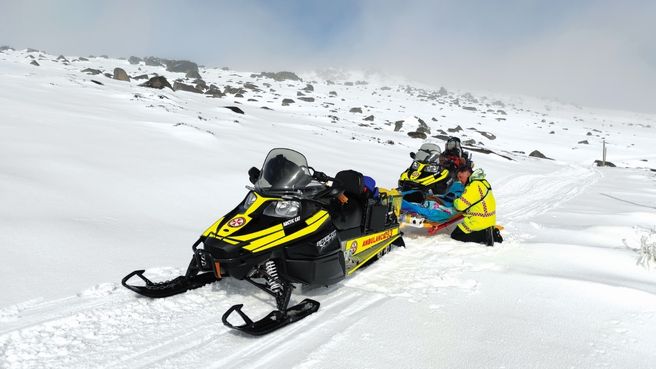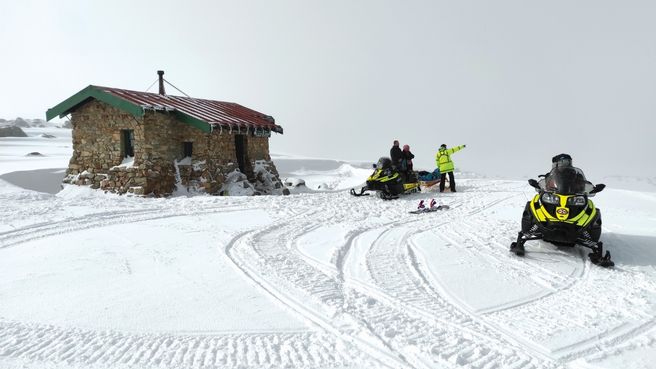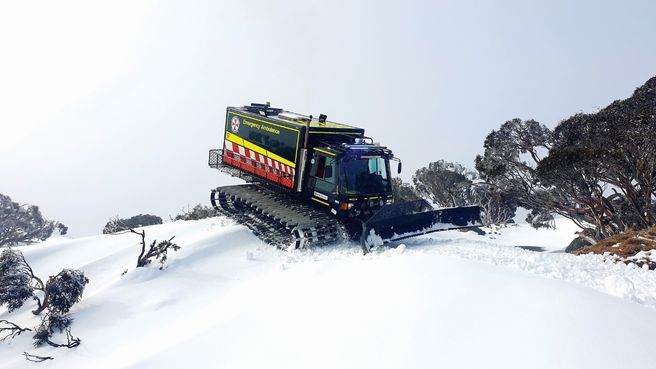
If you ski off a cliff up near Mt Kosciusko and break both your legs who are you going to call?
The correct answer – members of the NSW Ambulance Alpine Operations Team on their snowmobiles and the Kassbohrer oversnow ambulance.
This was the rescue scenario involving a 32 year-old skier on 2 July 2022.
“The patient was in a party of three skiers skiing in Kosciusko’s Main Range area in the afternoon of 1 July,” recounted Station Officer Paul Taylor from Alpine Operations.
“It seems like he hit a patch of ice around Etheridge Ridge, and couldn’t stop himself going over a cliff.
“The skier remembers being in freefall for several seconds, so we estimate he fell about 10 metres.”

What happened next was unorthodox to say the least.
“Despite having an EPIRB (Emergency Position Indicating Radio Beacon), the patient decided to crawl around 600 metres through the snow to shelter in nearby Seaman’s Hut.”
“He took three hours to get there using his splitboard* to drag himself along the way.
“I know we ask people to consider if their urgency is an emergency before calling us, but I told this guy we’d have got him the night before if he’d just activated his EPIRB!” said an incredulous Paul Taylor.
When the patient’s skiing party colleagues called Southern Control the next morning, NSW Ambulance Alpine Operations and Community First responders were dispatched from Perisher to Seaman’s Hut on a rescue mission that would take five hours.“The Community First Responders did a great job getting there first and splinting the patient’s legs,” said Paul Taylor.
“After stabilising the patient Paramedic Ian Pollard and I loaded him into a sled behind Ian’s snowmobile.
“It was a bumpy ride, so we stopped several times to manage his pain along the way to Charlotte Pass.

“Meanwhile Paramedics Melinda Latimer and Matthew Job were driving the Kassbohrer up to Charlotte Pass to meet us, to give the patient a safer more secure ride back to Perisher.
“That meant liaising with resort operators to close down ski runs as the Kassbohrer drove across them.”
The patient was taken to the Perisher Valley Medical Centre, and later diagnosed with bilateral fractures to his tibia and fibia.
“I’ve been working the snow season here since 1999 and this season is one of the busiest I’ve seen,” said Paul Taylor.
“With more and more people venturing into these backcountry areas, it’s a constant effort to ensure we have the equipment and expertise to get to these jobs.”
*A splitboard is a normal snowboard which splits into two halves. These halves become skis for travelling uphill or touring.
